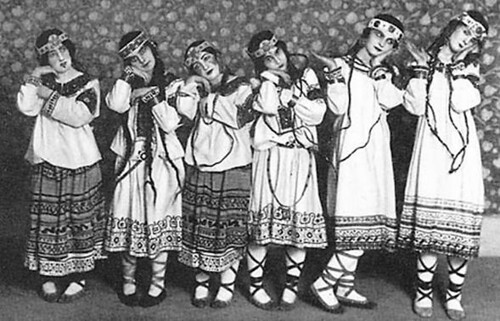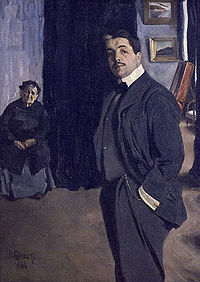The major ‘Glasgow Boys’ exhibition recently moved from the Kelvingrove Art Galleries in Glasgow to the Royal Academy in London, receiving broad (and in some places, mixed) attention in the press. But another exhibition currently on show at Glasgow’s School of Art reminds us that we should not forget the ‘Glasgow Girls’.
Designed by Charles Rennie Mackintosh in the last years of the nineteenth century, the modernist School of Art opened in two stages in 1899 and 1909. Under its enterprising director Francis (‘Fra’) Newbery, it was also the catalyst for the avant-garde ‘Glasgow Style’ in the early years of the new century. Significant female Glasgow artists of this period included the Macdonald sisters, Margaret and Frances, who exhibited with (and respectively married) Charles Rennie Mackintosh and Herbert MacNair in European exhibitions such as the Vienna Secession in 1900 and the International Exhibition of Modern Decorative Art in Turin in 1902. Both sisters challenged traditional representations of women with their elongated female images in water-colour paintings and embroidered panels. (Their detractors described this as the ‘Spook School’.) Margaret also exhibited widely on her own and in association with MacNair, and her work was featured in the principal European art magazines of the time such as The Studio, Deutsche Kunst und Dekoration and Dekorative Kunst.
Margaret Macdonald Mackintosh, Cover of 'Deutsche Kunst und Dekoration', May 1902, 1902. © The Hunterian, University of Glasgow 2010. |
Strong painters among this group of women artists included Nora Neilson Gray who went to France during the war as a volunteer nurse with the French Red Cross. Gray worked after her night shifts, producing chalk drawings of soldiers and striking oil portraits such as ‘The Belgian Refugee’ (1916) and a group portrait of the nurses and soldiers in the reception space for the injured in the medieval cloisters of the Abbaye de Royaumont where she was stationed.
 |
| The Silk Dress c. 1918, Eleanor Allen Moore, self-portrait, oil on canvas, private collection |
These talented women helped put ‘Glasgow Style’ on the international map, but they were neglected by art historians who traditionally focused on male artists such as the ‘Glasgow Boys’ and the ‘Scottish Colourists’ who were influenced by European post-Impressionism. They were neglected, that is, until American art historian, Jude Burkhauser’s seminal exhibition, ‘Glasgow Girls’: Women in Art and Design 1880-1920 was shown to much acclaim and huge audiences at Kelvingrove in 1990 during Glasgow’s year as European City of Culture. The accompanying catalogue, published by Canongate (and still available), is full of biographical and bibliographical research material, essays, photographs of the artists themselves and their Glasgow School of Art environment and, most importantly, illustrations of paintings, ceramics, fabric and other design work. Its influence has been phenomenal in establishing the ‘Glasgow Girls’ within our understanding of the visual arts and their importance in the early twentieth-century history of the city.
In ‘Beyond the Reaches of Feminist Criticism’, Shari Benstock argues that if we were to ‘dig deep enough’ among the ruins of the Panthéon, that ‘burial place for distinguished men’, then we would find there the forgotten women of literary modernism. Burkhauer’s exhibition precisely achieves this act of recovery. So the Glasgow School of Art’s decision to host a smaller version at the present moment should be met with enthusiasm. Although a small exhibition cannot display the larger art works that made such an impression in 1990, the current showing opens an important window onto the contribution to modernism in the visual arts made by the women of Britain’s ‘Second City of the Empire’ around the time that ‘human character changed’.










